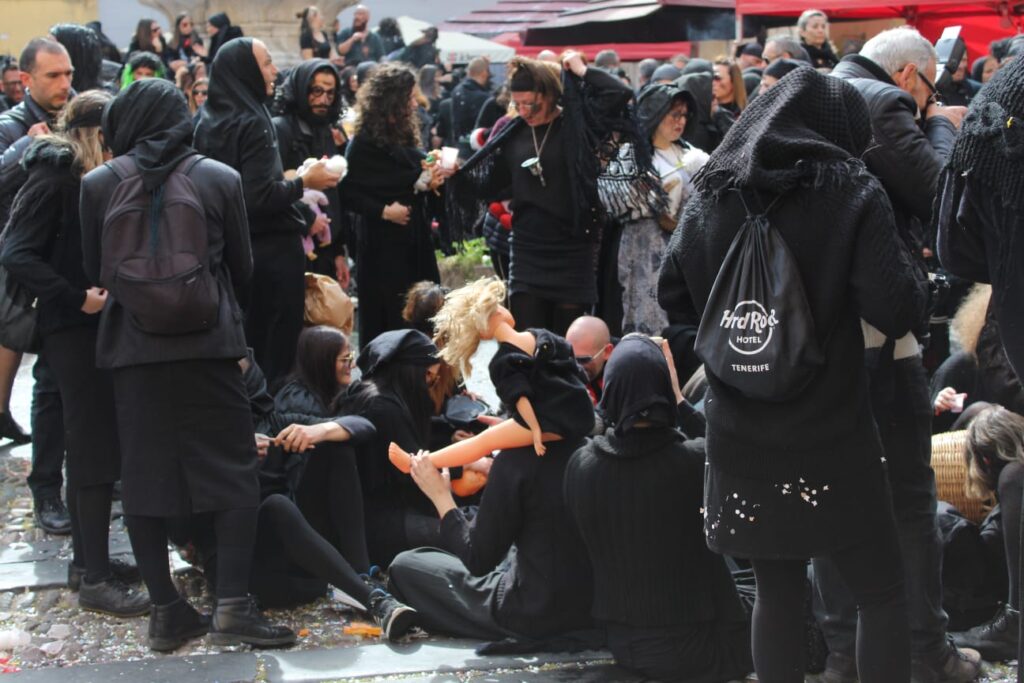Discover
The Carnival of Bosa, in the province of Oristano, is one of the oldest on the island, has characteristic features and different from all the other carnivals in Sardinia and changes its face between day and night.
The festival officially begins on January 17 with the celebration of St. Anthony Abbot and has its highlights on Maundy Thursday, Sunday, and the following Monday with the climax on Shrove Tuesday. The typical wine of the area, malvasia is one of the items that is poured and shared abundantly among the masks and travelers. Wine then, even in the center of Planargia, characterized by the vivid colors of its historic center is part of the jovial conviviality with which Bosans celebrate the festival and in which the motto “semel in anno licet insanire” takes on the deepest and truest meaning.
Traditional masks
The mask of the “Attittadora“ is played by the men who, with their faces sprinkled with soot, a red cross on their foreheads, their jackets worn backwards, their veils and black robes, mourn the children abandoned by their mothers devoted to licentious practices typical of carnival that call to mind Greek and Roman rituals. In the streets of the center “Sas Attittadoras” invite the women they meet to give milk to Giolzi, a puppet made of rags or a doll with which they simulate a feeding accompanied by explicit or veiled requests, Sexual innuendos and double entendres.
Giolzi, the mask that will go up in smoke in a large bonfire has a sheet for a cape and a pillowcase for a hood and is the personification of King Carnival that closes the Mardi Gras day.
“Sas Attittadoras” not only invite the (unmasked) women they meet along the way to give (mother’s) milk to Giolzi whom they carry on their laps or in a cart in tow, but knocking from door to door, to the sound of instruments created for the occasion, they ask for food to be skewered in a pointed stick that they carry with them.
Satire is the bargaining chip of gifts taken at the door that takes the form of “
muttettus”
and “
trallallera”
which in general hilarity are addressed to fellow villagers in remembrance of wrongdoings or incidents that have occurred. This phase of the festivities also continues on Carnival Sunday and Monday, when the satire changes focus and from individual fellow citizens veers to the events that occurred during the year just past.
The final bonfire
Having reached sunset, the party changes its skin again and the masks leave the void for a short time and return to wander where bonfires have been lit here and there in the street, but in the form of Carnival Souls: to the blackness of the morning they opt for the whiteness of the sheets that white go in search of King Giolzi. The faces of the masks are still covered in soot, and everyone is holding a lantern. Found the puppet is set on fire. This is how it ends on “Carrasegare ‘Osincu” until the following year, where everything begins again in a propitiatory rite and in an atmosphere of irreverence and peculiar goliardy.
Days
17 January 24
13 February 24
From
Information/To know
Suitable for Everybody
Wheelchair accessible
Location/The place
Address
Bosa, OR, Sardegna, Italia
How to get there
From Cagliari: Take SS131 north towards Oristano. From Oristano, continue on the SS292 until you reach Bosa. From Oristano: Take SS292 northwest toward Bosa. From Sassari: Take SS131 south towards Macomer. From Macomer, take the SS129 until you reach Bosa.
